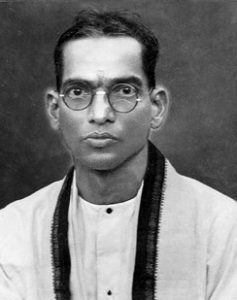2. FROM DEVIBHAGAVATAM:
Once Narada went to visit Vishnu. Noticing that Narada was approaching them, Laksmi, the consort of Vishnu, moved away from being near to Vishnu. Narada wondered why she had to move away seeing him who was just an aged Saint. When he enquired the reason, Vishnu remarked that it would always be better to keep distance from other males as anything might happen under the power of illusion. Narada requested Vishnu for a demonstration of his power to create illusion. Vishnu then took Narada on a ride on his Vehicle Garuda and reached Kanyakubja. Vishnu asked Narada to have bath in a pond there. When Narada came out of the pond, he got transformed into a beautiful lady. Vishnu quietly left the place.
A King by name Taladhwaja saw the lady and fell in love with her. He took her along with him to his city. He made her his queen. They had a few sons. In course of time, some enemy kings pillaged his city. They killed all the sons. The queen was extremely grief-stricken at these developments. Lord Vishnu went to her in the guise of an old Brahmin and consoled her. He taught her about the impermanence of relationships in this world and instructed her on spiritual Knowledge. He took her along with him. He asked her to have a bath in a nearby pond. Immediately after the bath, the queen got back her original form of Narada. Narada prostrated to Vishnu and realized His powers of illusion. Continue reading

